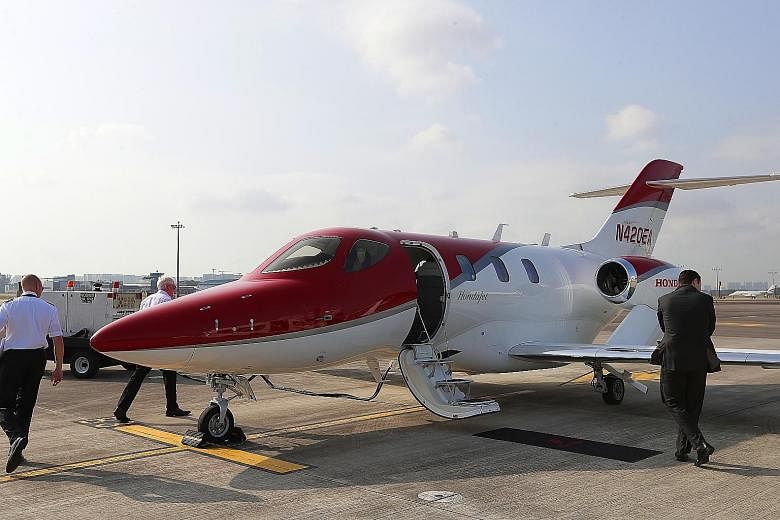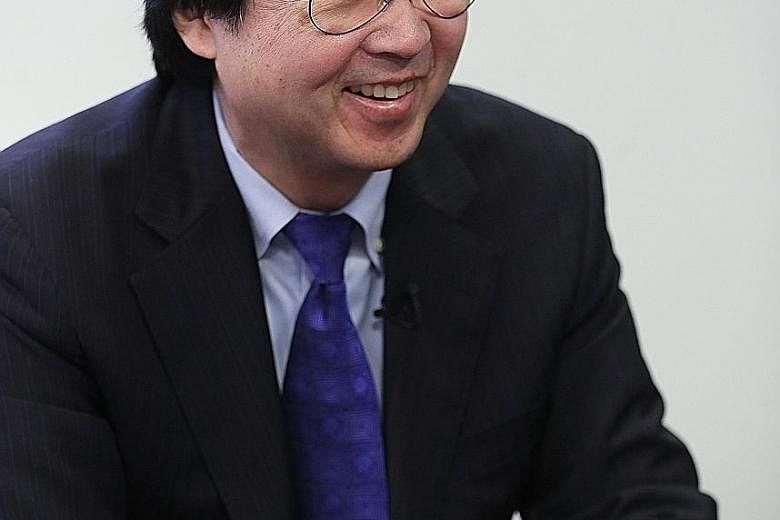His aerospace engineering professors taught him that it was wrong to mount anything atop an aircraft wing. Industry peers dismissed his design as ugly.
But Mr Michimasa Fujino, 57, chief executive of Honda Aircraft, defied naysayers, and his bold vision paid off.
After almost three decades of development, the first HA-420 Hondajet - a light aircraft with engines mounted over the wing instead of on the fuselage like other business jets - was delivered in late 2015.
Today, 73 Hondajets are in the skies, and the factory has a "very good" backlog, Mr Fujino said.
Yesterday, Honda Aircraft announced its single largest order to date - 16 Hondajets for European air taxi operator Wijet. The deal was inked on the sidelines of the Singapore Airshow 2018.
Discussing the Hondajet's design yesterday, Mr Fujino said the size of a plane's cabin can be maximised by mounting the engines over the wings instead of on the fuselage.
"Engine vibration and noise do not transmit to the fuselage directly, it goes to the wing. That is why the Hondajet is very quiet," he said, adding that he also managed to reduce drag after finding the optimum position to mount the engines.
The Hondajet marks Honda Motor's foray into the aviation market. Mr Fujino said: "We see Honda as a mobility company. We start from motorcycles to automobiles... now we want to create new value in the aviation industry."
Honda began research into aircraft design in 1986, and the Hondajet project proper took off in 1997.
Mr Fujino said Honda Aircraft, a subsidiary of Honda Motor, produces four jets a month, but will ramp this up to five in the next few months to keep up with demand.
The company has set its eyes on China and South-east Asia, even though the markets for private jets are more developed in Europe and North America. "In China, there is a young generation of businessmen who are pursuing efficiency and productivity," he said.
Hondajet opened a facility in Guangzhou, China, last month and appointed a dealer in Thai-land last year.
The Japanese-owned planemaker, based in the United States, is already making its mark in the industry, competing against the likes of Brazil's Embraer and US manufacturer Cessna. Wijet, for one, will be replacing its fleet of 15 Cessna Citation Mustangs with 16 Hondajets over the next 11/2 years.
Mr Fujino's dream to design his own jet would have been shattered if he had not persevered with his over-the-wing engine design.
He noted that a friend had asked him not to submit a research paper on his unconventional design to the Journal of Aircraft, for fear that his credibility in the industry would be tarnished if it received an unfavourable review.
He said: "The paper reviewer said these were relevant findings to the airplane design community, and in only a few months, it was published. That was one of the pivotal moments - from (it being) a ridiculous design to a high-tech design."



